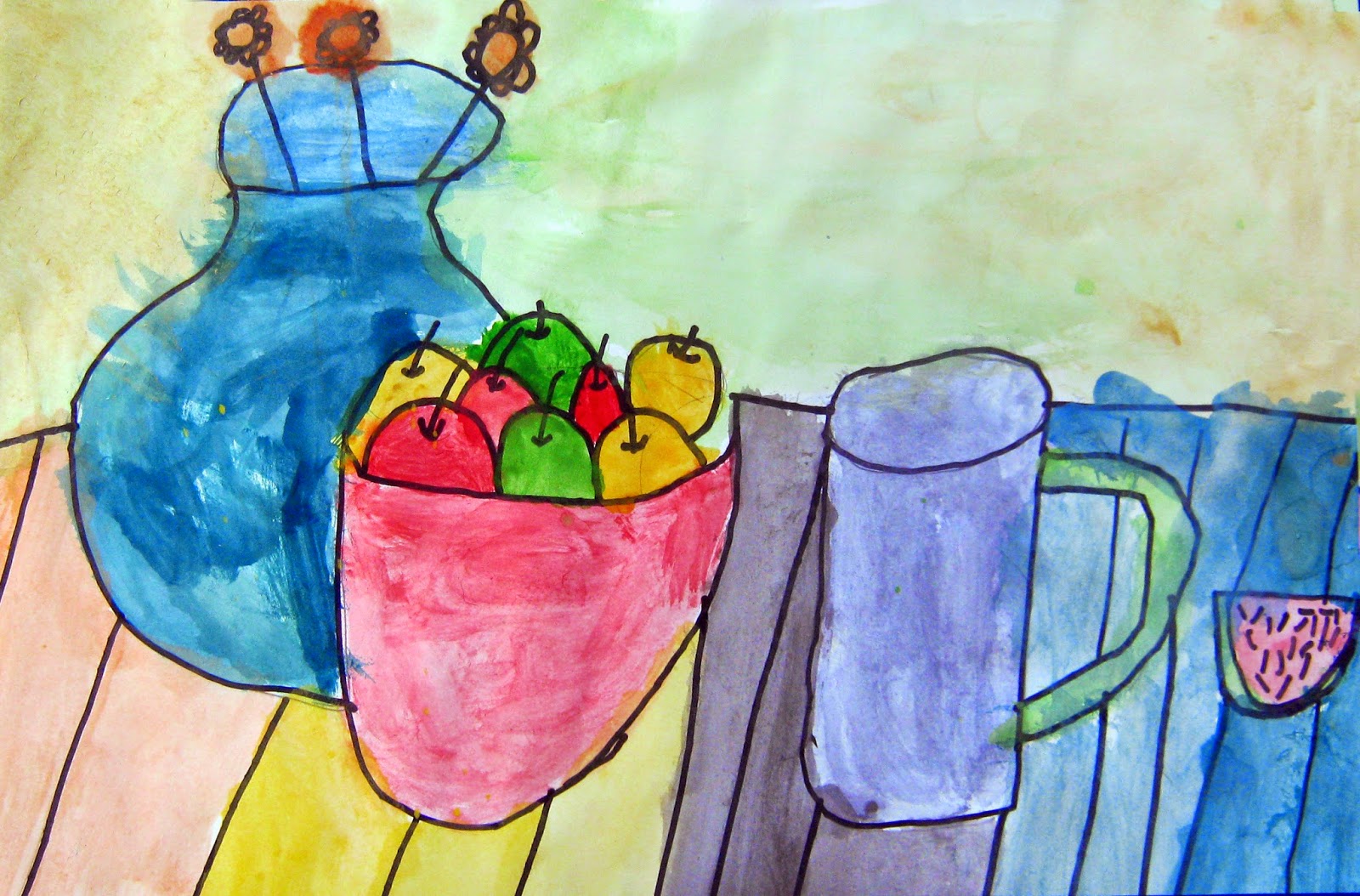The composition of a still life is the most important thing to consider. Objects are arranged on a table top to create interest, to highlight color, and to create a sense of movement across the page. When we began our still life drawings, we learned how to create a composition with overlapping shapes. When objects overlap, it is important to understand which one goes in front. We learned that the object or figure lowest on the page should be the one in the front.
 |
 |

Once we drew all our objects in an interesting overlapping arrangement and added in details, such as fruit, a table cloth and a background, we used watercolors and a fine detail brush to add color.
Here are a few wonderful examples of our still life paintings. You can see everyone's work by following this link to artsonia.com.
http://www.artsonia.com/schools/school.asp?id=114839
 |
| Artwork by Layla |
 |
| Artwork by Ethan S. |
 |
| Artwork by Lynna |
 |
| Artwork by Anthony |
Note to families . . .
This art blog will be updated regularly with new posts sharing our daily activities in the art room and news about upcoming art exhibits. To respect the privacy of our students, names will always be limited to first name only and identifiable photos will never be accompanied with a name. If you have any questions or comments, please feel free to write in the comment box below or send me an email at blevine@ranneyschool.org. I would love to hear from you!
In my class, students are given the chance to explore different materials and fun new techniques as they develop their signature style. Some young artists love to draw with a pencil, some like to paint on canvas or create images in a digital format, while others prefer working with clay and molding three-dimensional forms. In my classroom, we use a variety of materials allowing all artists to experiment and figure out which type of art they like the best. At Ranney School, we place a strong emphasis on originality and celebrate artistic differences, always nurturing and encouraging the imagination of every student.
Remember to check out our display of finished artwork and student portfolios in the Ranney home page of Artsonia.com. http://www.artsonia.com/schools/school.asp?id=114839

No comments:
Post a Comment
Thank you for your thoughts!
Barbara Levine
Ranney Lower School Art